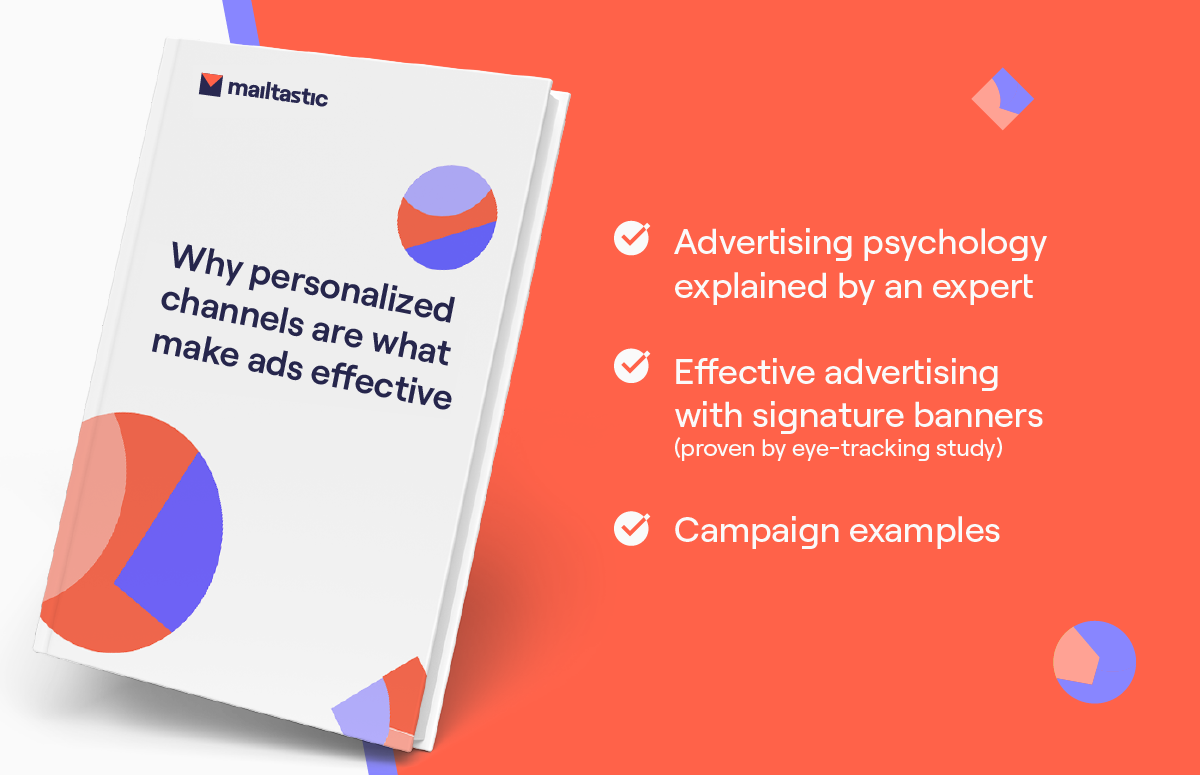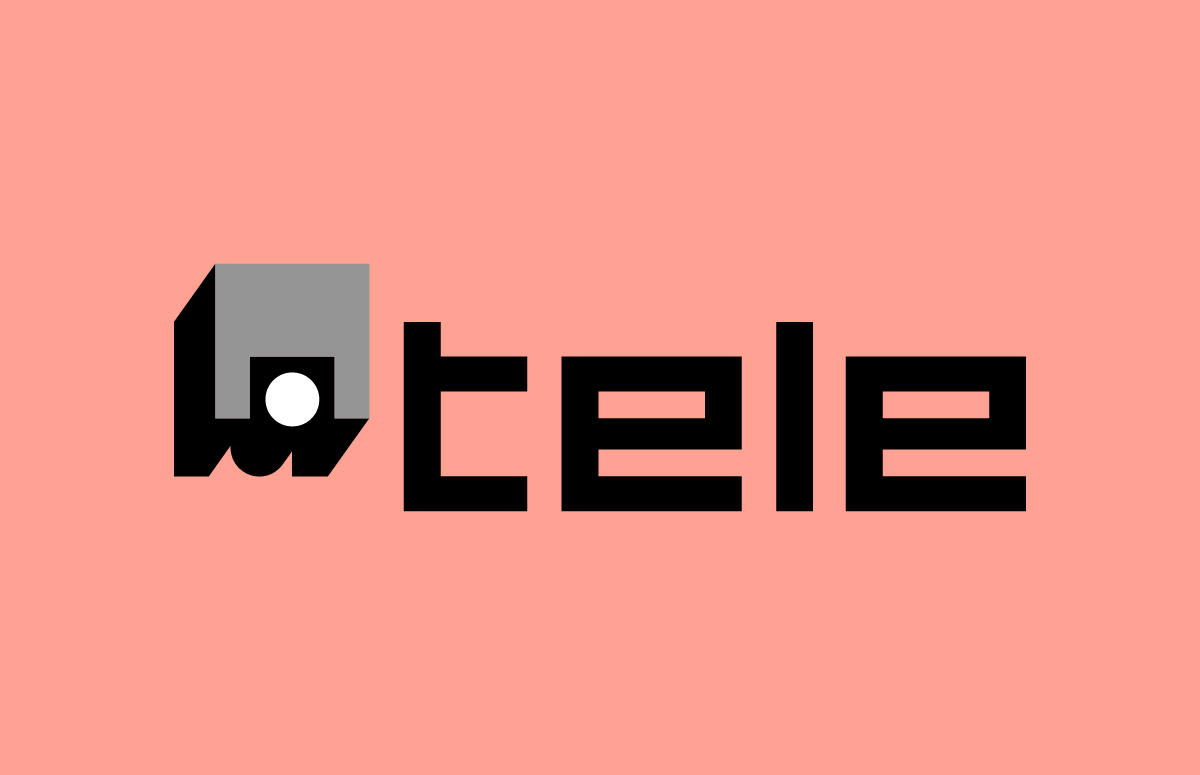Interview: How marketers reach their audience in the noisy world of advertising
A giant pop-up on a website, ads before podcasts, an ad on Facebook, a sponsored post on Instagram, two non-skippable video ads...
Every day, our brains are challenged to process thousands of advertising messages. Experts estimate that the average person is exposed to between 5,000 and 13,000 messages a day.
It's becoming increasingly difficult for marketers to cut through this noise and reach their target audience.
We spoke to Sabrina Etter about this challenge. Together we explored psychological strategies in advertising.
In the interview we discuss the following topics:
-
How has the advertising landscape changed in recent years?
-
What psychological strategies does advertising use?
-
Can companies still advertise successfully despite the flood of advertising?
-
What is "good" advertising?
About Sabrina Etter
Sabrina has a Master's degree in Psychology & Media Sciences. She consults with companies on psychology in marketing. She shows her clients how to integrate psychological triggers into their marketing strategy to increase customer loyalty and sales.
LinkedIn / Website
Advertising vs. Marketing
Before we get into the interview with Sabrina, it's important to distinguish between the terms marketing and advertising. Advertising and marketing are two closely related but distinct concepts.
Marketing refers to a comprehensive process aimed at successfully positioning products or services in the marketplace. Marketing is strategic and long-term. It's about building a strong brand presence.
Advertising, on the other hand, is part of the marketing mix and focuses on the targeted promotion of a product or service. Advertising uses different channels to capture the attention of the audience. The purpose of advertising is to directly engage consumers, arouse their interest and persuade them to make a purchase.
More and more advertising
We are bombarded with around 100,000 stimuli per second. An increasing amount of this is advertising, push notifications, etc.
Sabrina explains: "Unlike in the past, we have a lot more information coming at us, but at the same time, our attention spans have decreased drastically."
Studies back this up. The attention span of Generation Z is only eight seconds, compared to twelve seconds for previous generations. This could be due to information overload and the rise of short-form content like TikTok.
"That's why marketing and advertising really needs to make an impression in the first second," Sabrina points out. "Gen Z needs a fraction of a second to decide whether or not something is interesting and worthy of their attention."
"I suspect that when we have further studies on this in five or ten years' time, it's really just a blink of an eye. In that short time, you have to get someone hooked to even get their attention.“
The advertising filter in our brain
The brain is very good at filtering information to cope with information overload. Studies show that we process 90 per cent of information unconsciously and only about 10 per cent consciously. This has an impact on the way we perceive advertising.

Sabrina explains: "People think of the brain as a thinking machine, but it works more like a filter. Stimuli are processed in the limbic system of our brain, and emotions are processed there first.
Decision making in the brain is a two-step process.
 This is important to know because when I appeal to emotions, it goes straight into our brains like a quick shot. We like to use these mental shortcuts to reach a conclusion. It's only in the second step that we rationalise, for example by gathering more information and weighing up the pros and cons. Why do I want to buy something or not?
This is important to know because when I appeal to emotions, it goes straight into our brains like a quick shot. We like to use these mental shortcuts to reach a conclusion. It's only in the second step that we rationalise, for example by gathering more information and weighing up the pros and cons. Why do I want to buy something or not?
That's why it's important to tailor advertising and therefore marketing to our thought processes.
Advertising underdog email
"Email is always a bit of an underdog," says Sabrina. "Email is a constant in marketing, while the performance of other strategies fluctuates.
Email is a reliable advertising strategy because you can use psychological buying incentives very effectively. For example, our brains like order. Email can be very well structured to make it easier for the eye and brain to sort through the information.
You can use paragraphs and images, you can use colours, maybe even some emoticons. If I also have a personal message and talk about wishes and needs in the content, it can work well.
It is also interesting to look at buying behaviour via email. Studies have shown that email readers can be divided into three buying groups:
5% of readers buy immediately. This group has been looking for such a solution and is therefore ready to buy immediately.
75% don't even read the email and delete it immediately.
"The last group is the most interesting. 20% of recipients find the offer interesting, but the timing is not right.
They are interested in staying in touch with the company and could be potential buyers in the future. I can reach this group again with further emails."
"This should be kept in mind because it makes email a channel that is likely to work very well in the coming years."
Personal business email as an advertising channel?
An eye-tracking study by UX Labs of the University of Zadar and Mailtastic showed that banners in business emails are an effective advertising channel - without appearing too commercial.
On the contrary, participants in the study rated the banners positively and even preferred emails with banners to those without. From a marketing psychology perspective, Sabrina evaluates the results as follows:
"Your study is very much in line with previous eye-tracking studies. In general, we can assume that the gaze path is from top to bottom and from left to right. This means that when we read an email, we start at the top left and then move through the text in this pattern.
At the same time, studies show that images are looked at first and that images are usually looked at longer than text. If the text is clearly structured, with short sentences, and the image is below it, it works well. I even stay on the page longer because I want to read the banner at the end. If you then support it with colour, you can direct the eye even better."
You can see this very clearly in the eye-tracking recordings. The red dots show the fixation of the test person's gaze and the viewing path of the email.
![]()
Example of an eye tracking recording: The circles represent an eye fixation.
Sabrina adds: "If I have short text and paragraphs and the reader immediately knows how long the email is, they will definitely look at the image at the end. Our brains process images faster and easier. We don't always feel like reading long paragraphs and making a cognitive effort. That's why we prefer images.“
"If I want to emphasise this even more, I include people in the banner. We humans always look at the face first and our attention goes there quickly."
This is also shown by the results of the eye-tracking study on the effect of email signature banners. Banners with faces are fixated significantly more often than the control banner without a face. This is shown in the heatmaps of the study.
![]()
Again, Sabrina has a few tips. "For example, if the direction of the person in the banner points to a CTA button, and the person is looking at it or even pointing at it, then our gaze automatically goes to that button.
This is evolutionarily hardwired into us. If there is a danger, for example, we pay attention to where other people are looking. This works very well in pictures and photos. If the person in the photo is looking in the direction that our customers should be looking, then we have an additional advantage.“
4 principles of sales psychology with examples
4 principles of sales psychology that are easy to apply to create effective advertising.
Social Proof:
Sabrina explains that the most successful sales psychology principle today is social proof.
"We like to trust other people when making decisions. We hope that others have already checked out the offer a bit better than we have, and then we go by their recommendations.
The best example of this is customer reviews. If I see that a product has 5,000 reviews with 4.5 stars, then as a consumer I know, OK, many others have tested this product before me, I can buy it.
Applied to services or the B2B sector, these are often references or industry-specific review platforms.“
Example of social proof on the Ahrefs website: Trust is built through customer testimonials and average rating on relevant platforms.

Quelle: https://ahrefs.com
The concept of social proof can also be applied to email signatures. For example, a quote from a customer can build trust in the email contact. As the eye-tracking study shows, people's gaze is particularly directed to the banner when a person is featured in the banner.

Anchor Effect
"With the anchor effect, we humans like to be influenced by numbers. This means that the first number sets a reference value.
An example: We have a product that costs €100. At first glance, that might seem like a lot. But if I put another number in front of it, then we are influenced by that contextual information. If I write that the product used to cost €160, cross it out and set the new price at €100, then the price now seems affordable to us".
The anchor effect is often used on Amazon products. The original price is crossed out and the anchor is placed with the user so that the reduced price is perceived as a bargain.

Quelle: https://www.amazon.com
Here's another example where the anchor is set by the highest price, making other options more attractive by comparison.

Quelle: https://mailchimp.com/pricing
Decoy Effect
"When I can't decide between two products, I need a third option to help me make a decision - that's the decoy effect.
This triggers a logical comparison process in us. "We think that the cheapest might not be of good quality, the most expensive might not have a good price-quality ratio, and the golden middle, that seems like a good solution".
Example of the decoy effect in the subscription overview on the Netflix website: In this case, the middle package seems to be a good compromise. The price difference between the standard and premium packages is relatively small and could even be an incentive to opt for the premium package.
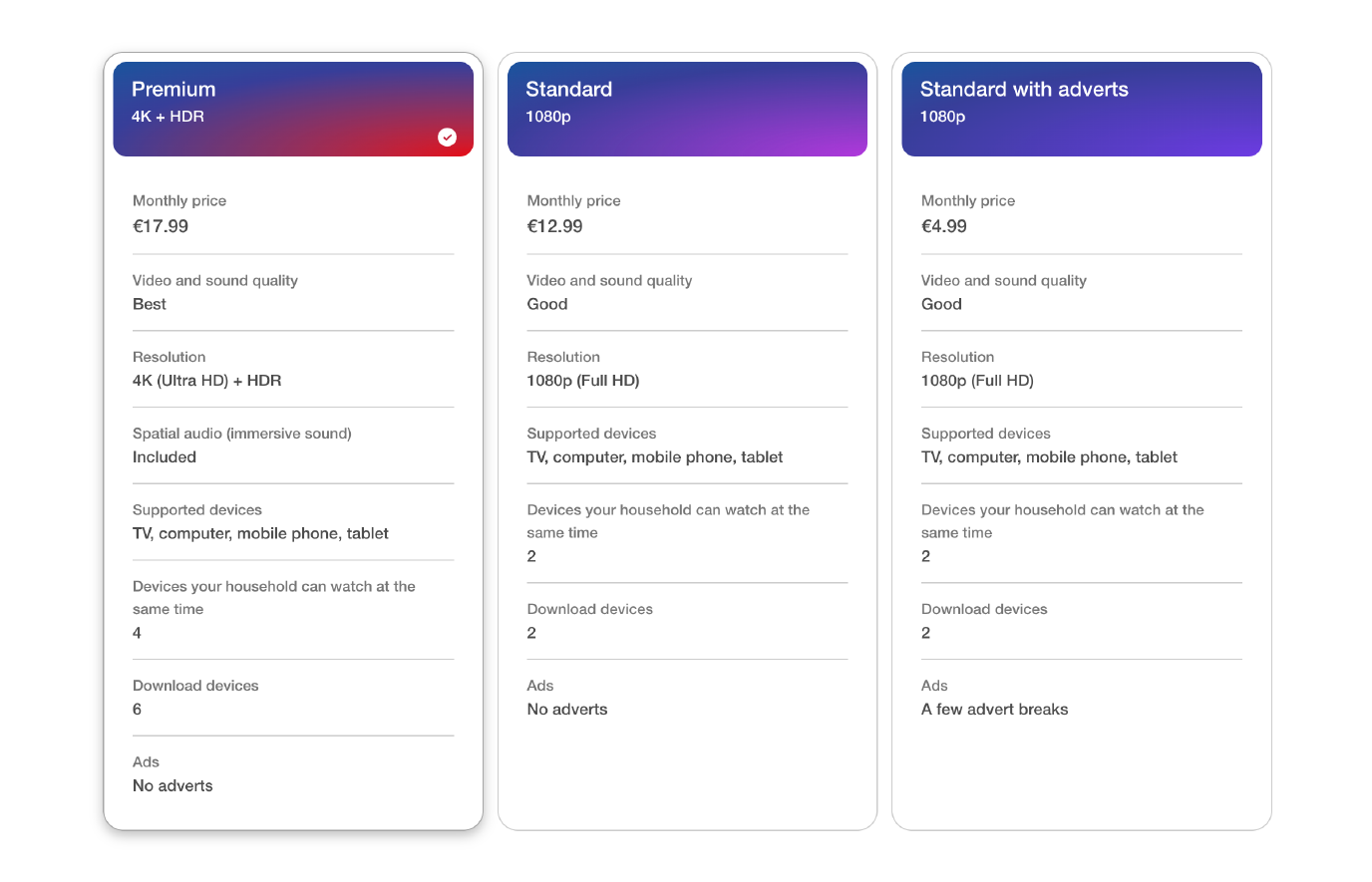
Quelle: https://www.netflix.com/signup/planform
Halo Effect
"When we meet someone we don't know, we want to form an opinion about them very quickly. This means that we have very little information about the person. So we try to take a shortcut and form an overall picture from the first impression.
In digital marketing, we often use influencers because the halo effect works there too. "That means, I have a positive association with the person of the influencer, so I may also have the same positive association with the product or the company."
Example of the halo effect with influencer Pamela Reif. As well as working with Nike, she also promotes hair styling tools from GHD. With her long hair, she is the perfect testimonial with a wide reach for the company.

Quelle: https://www.instagram.com/pamela_rf/
Collaboration between companies and personal brands on LinkedIn is also becoming increasingly popular. The halo effect of the person on the product also works here. The effect is often even more credible as people often stand for their profession and expertise.
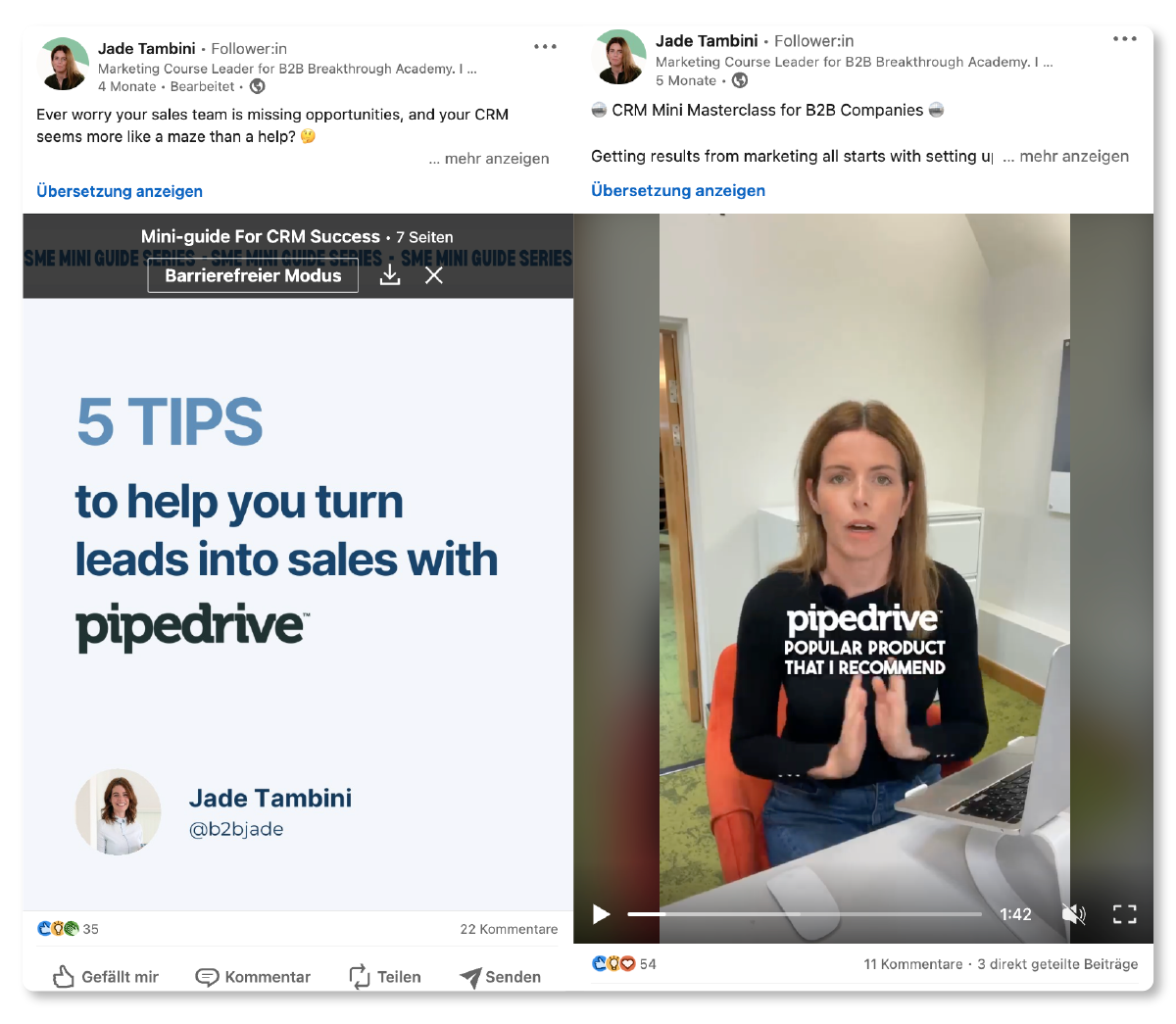
Quelle: https://www.linkedin.com/in/b2bjade/
What makes advertising "good"?
Much of the advertising we see in our daily lives is perceived as rather annoying. But are there ways to create "good" advertising that is positively perceived and enjoyed by the target audience?
Sabrina explains: "When we perceive advertising or marketing as positive, it also depends on hormone release. Advertising is perceived as positive when dopamine is released in the brain.“
"Dopamine is the happy hormone, and that is exactly what can be triggered by certain elements in advertising. For example, through certain images, through humour, through videos showing, for example, a customer who is happy with my product or service."
The results of the eye-tracking study also confirm the effect of images. The majority of participants said they preferred emails with banners. Sabrina adds: "Colours evoke certain stimuli in us and are perceived more positively than just black and white text in an email".

"Dopamine release can also be stimulated by showing people in the target state," says Sabrina. "This means that we may already be aware of a certain problem, and in the ad we see a person who has already solved the problem and is now completely happy about it. Of course, we want to achieve that emotional state.
Sabrina also suggests taking a different approach to advertising in order to stand out from the crowd. "Predictable cookie-cutter marketing won't make you stand out," Sabrina points out. "If I know after the first second that it's an insurance ad and it's telling me the same thing as the other 78 insurance companies, I'm gone.
So another point is to add an element of surprise, something unexpected, to the advertising.“
"It's worth taking a risk here and being a bit brave, doing something different. It creates curiosity, and curiosity creates stickiness."
Examples of LinkedIn ads that use surprise:
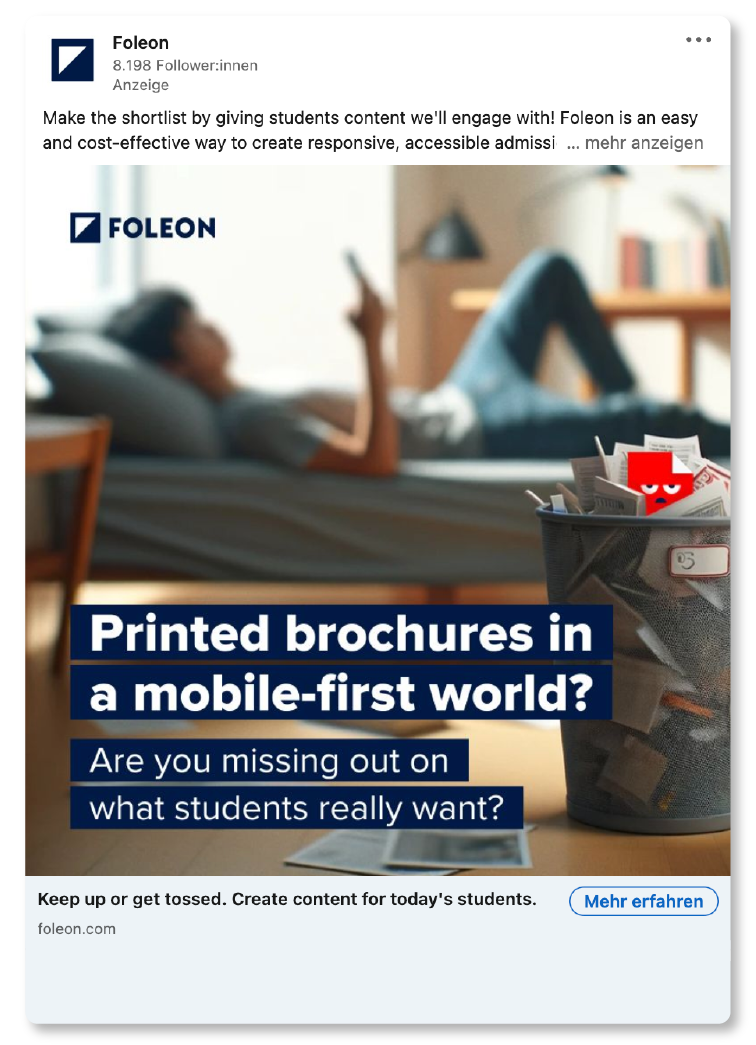
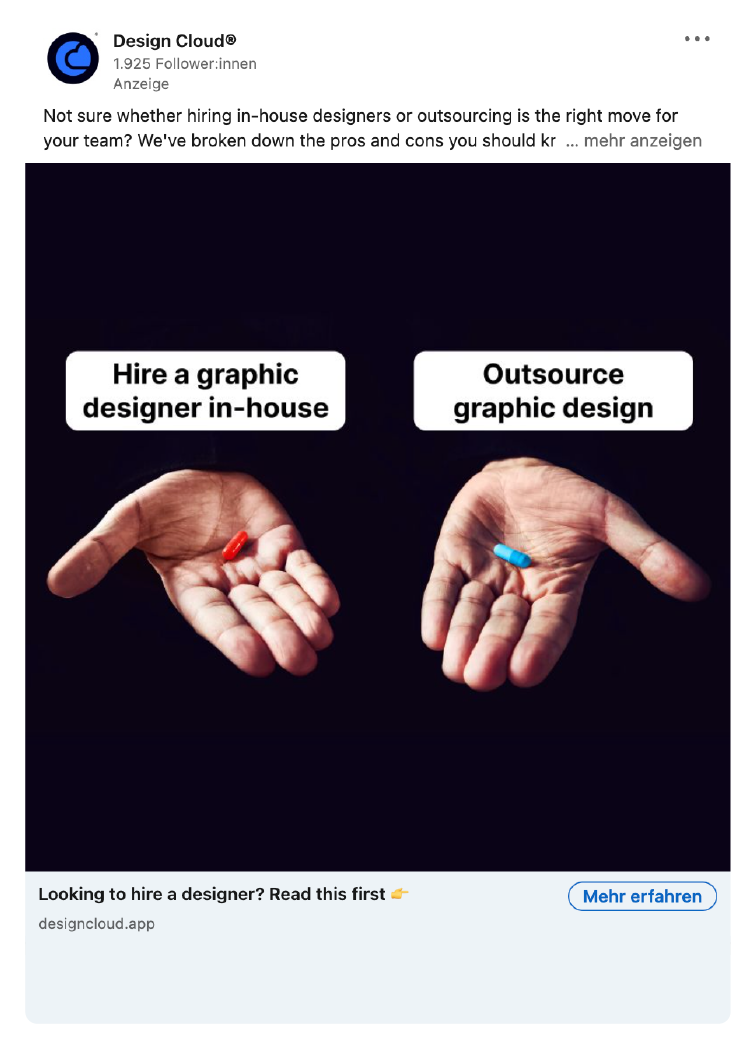
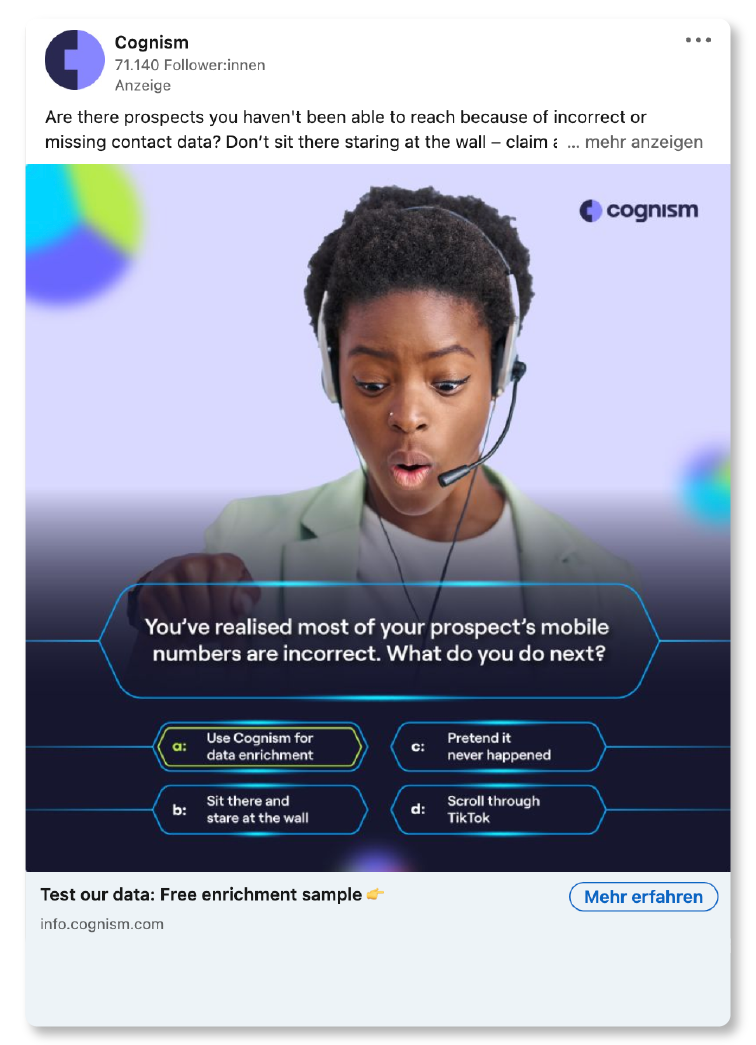
What is the role of the ad platform?
Which platform is best for advertising? Marketers need to consider where the target audience is, and when and where they want to consume content.
Sabrina describes: "A typical customer might start their day on LinkedIn. I want to share ideas, network, read business news and, depending on the product, maybe even shop. It always depends on what kind of product or service I have.
In addition, employees often start their day by checking their email inbox. This makes signature banners an effective channel to reach the target audience in a business context.
Sabrina continues: "In the evening, after work, they're sitting on the couch and they're more likely to open the Facebook or Instagram app to maybe watch a short funny video.
When I'm sitting on the couch in the evening after working all day, I just want to relax and be entertained."
"But if, for example, I have a product that requires a lot of explanation, then I have to consider which platforms my target audience uses and how I present it there - does it need to be entertaining or perhaps more fact-based?"
“Where is my target audience, on which platform do they shop, where do they look for solutions to their problems and where do they look for entertainment?“
The Lavender videos are an example of a YouTube series that positions a B2B product in an entertaining format. Lavender Joe randomly approaches people in the park using bad sales email phrases as a pitch. He tries to persuade them to book a demo, but of course it doesn't work and people's reactions are very entertaining. At the same time, Lavender successfully positions its AI solution to help salespeople write better emails.
In conclusion, Sabrina sums up what makes good advertising today: "The exciting thing about advertising is that it requires a lot of tact. You need sympathy and empathy.“
"Every company wants to sell something, but it must not feel like selling or advertising. That's what makes advertising an art."
We would like to thank Sabrina for her insight into the psychology of advertising and her tips on how to create effective advertising to reach your target audience and stand out from the crowd.
